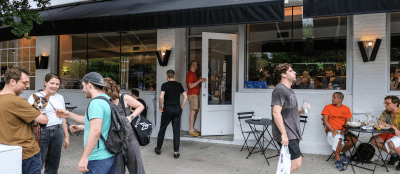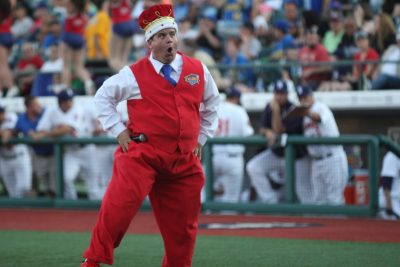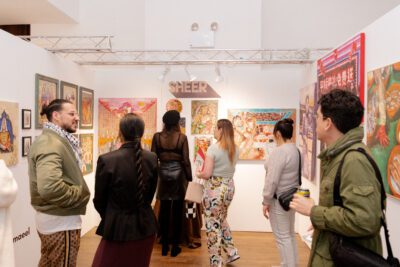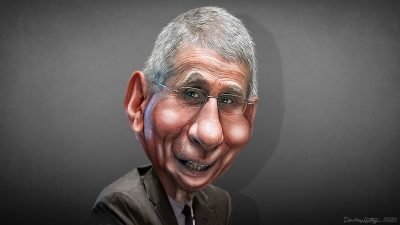A Visit to the Tonya Harding and Nancy Kerrigan Museum in Williamsburg

Viviana Olen and Matt Harkins, curators and operators of the new Tonya Harding and Nancy Kerrigan 1994 Museum in Williamsburg
The 1994 Winter Olympic Games held in Lillehammer, Norway were the first competitive sports competitions I can remember watching and understanding. I’ve never been much for sports, but figure skating was always pretty decent in my book. The sparkly outfits, exasperation and gracefulness of the skaters, the Russians—all of that has makes the sport (more of a performance really) more appealing to my unsporty sensibilities, and when I was 6 years old these things were acutely fascinating as well as mysterious. But what really got me going in ’94, was the dramatic story of skating rivals Tonya Harding and Nancy Kerrigan.
That’s why a museum dedicated solely to the story of the feuding athletes isn’t wholly ridiculous, rather it’s about time. And leave it to Williamsburg residents, Matt Harkins and Viviana Olen, to make like their neighbors and find another niche you never thought existed (see: vegan fedoras) and fill it.
If you’re in your mid-20s or not much older, you might remember the Tonya Harding and Nancy Kerrigan story as something of a fairy tale. Nancy was the perfect one—perfect teeth, perfect hair, perfect outfits—she was the darling of the media as well as corporations who showered her in sponsorship cash and commercial opportunities that portrayed her as a literal Disney princess. Above all, she had a strong familial support system and people who believed in her (Nancy’s father was a welder who reportedly worked overtime to help fund Nancy’s early skating career).
Tonya Harding, on the other hand, despite being the first American woman to land a triple axel in competition, was seen as the trashy one. Harding was abused as a child and grew up moving from house to trailer park to ratty apartment. All the odds of her becoming a successful figure skater were stacked against her, but she pressed on, dropping out of high school and supporting herself to compete, sewing her own outfits to save money. Despite the hard work, Harding had difficulty landing product endorsements and reached her professional peak around 1991, about the time when Nancy Kerrigan emerged as a serious contender for the 1994 Olympics.
“If anybody wanted to beat Nancy it was me,” she told a reporter just prior to the incident that would make her one of the notorious figure skaters ever. Just prior to the Olympics, at the 1994 U.S. Figure Skating Championships in Detroit, Kerrigan was clubbed in the knee by a mysterious attacker who turned out to be Tonya Harding’s body guard. Nancy’s twisted visage, an image of her crying out in pain immediately after the attack, is still instantly recognizable from my childhood.
The story is still super fascinating one and a recent documentary, The Price of Gold, brought the incident back to roommates Matt and Viviana, who were 9 and 8 years old respectively the year of Nancy Kerrigan’s attack.
“If you were growing up you had this idea of Nancy as this princess and Tonya as, like, Satan. That’s how they were painted in the media,” Viviana explained. “So watching the documentary is so fascinating because you get to really learn about where Tonya came from and all of these things you would have never thought about if you were growing up with it.”
After watching the film together, the two roommates who recently moved into a small Williamsburg apartment with a comparatively large underutilized hallway, were inspired to create a museum dedicated to the Tonya Harding and Nancy Kerrigan story.


The hallway, now painted black in anticipation of the arrival of the museum’s permanent collection.
“The story was like bad girl, good girl. It was just so black and white,” Viviana said. “I think we’re in a place right now where as a culture we’re constantly looking to that, because we want to see the truth and we don’t want to put things in columns. So if you take another look at this story, it’s fascinating because it is so relevant. It affected all of us and there’s so much drama in it, there’s so much to learn from it.”
It’s true—the story does say a lot about class in America. It sort of shatters the American upward mobility myth and the assumption that class is more fluid and flexible in the United States. Tonya worked incredibly hard and was a supremely talented athlete, yet still didn’t receive the recognition she deserved or the same opportunities as her counterpart. Could it be because Tonya had greater difficulty in shedding her working class image? Was Nancy more successful simply because it was difficult to tell she was also from a working class background?
Both Matt and Viviana are in awe of Tonya ability to conquer adversity and her incredible dedication to the sport, despite her rather dubious morality in light of her participation in a plot to ruin Nancy Kerrigan’s career.
It’s all very heart breaking really, but you can’t deny that Harding enlisted people to violently attack her rival. And that’s just straight up not cool. I wondered if the museum was going to pander more toward Tonya. “I sympathize with both of them equally,” Matt said. “Think about Nancy, all of a sudden she was this ice princess, and that’s not really true. She came from a similar upbringing as Tonya, the only difference was her surroundings, her support system and that made a world of difference in how they were able to navigate their careers.”
He added: “But they were both just these badasses.”
To create the Tonya Harding and Nancy Kerrigan 1994 Museum, Matt and Viviana put together a Kickstarter with the goal of raising a modest $75. “Initially it was just, we’re going to go to Duane Reade and blow these Nancy and Tonya pictures up larger and it’s going to cost like $50,” Viviana explained. “But after the reaction and seeing that we really connected with people, we definitely want to set up a full museum experience.”
The campaign received a ton of attention from local and national media outlets alike and the pair were able to raise just over $2,000. The museum, which will be private and available for viewings by appointment only, will now include video elements and be accessible to everyone through an online video. Additionally, Lois Elfman, a sports journalist who covered figure skating in the early ’90s has come forward in support of the project and donated artifacts to the museum including photographs she took of Kerrigan and Harding in competition.
The pair also have plans for an opening gala complete with artwork as well as musical performances inspired by the Tonya and Nancy story, and maybe best of all the premiere Tonya Harding look alike. Their plans are ambitious, but the museum curators say they’re still on the lookout for their dream artifacts. “I would love one of Tonya’s homemade outfits,” Viviana said. “It would just be so relevant and the other side of the hallway we would put one of Nancy’s Vera Wang outfits—it would be very powerful.”
You might also like 























